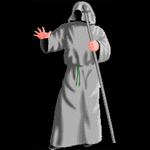Fundamental Theory of arithmetic
.
Mathematics! Its online
Prime Number Sequence

An Introduction
A prime number as we all know, is a number that is bigger than 1and is only divisible by 1 and itself. Any formula to produce prime numbers does not exist (yet) as there is no way to reduce a prime number to anything that is smaller than itself. Prime numbers are basically the building blocks for other numbers, all non-prime numbers can be said to be divisible by that of a prime number. Insects are also known to make use of the non -compressibility of primes in reproduce time so as to avoid predators. Are there other uses in prime numbers for humans? Well, yes, we are going to go into one of its applications soon enough.
Application of Prime numbers in music
Prime numbers have the characteristic that they extract themselves from each regularity. Since their expansion is infinite, useful information might arise from time to time, and music is one of the results. MIDI files can be created with the usage of prime numbers
With the exception of 2 and 5, any prime number, modulo 5 have as results: 1, 2, 3 or 4. Around now the definite Midi note to be received, the modulo results of three successive prime numbers are selected and to a number, on base 4, compound. 64 possible combinations result.
In each case three basic pairs, in the molecular biological language for special purposes as "codon" designated, stand for an amino acid. However, only 20 amino acids are formed from the 64 possible combinations. There are several combination suits for the same amino acid.
How to Calculate the first 3 MIDI notes
The three first prime numbers 7, 11 and 13 modulo 5 results in 2, 1, 3. In the four-calculating-system this number represent 2-1=1, 1-1=0, 3-1=2 >> 102. In the decimal system this results in 1*4^2+0*4^1+2*4^0=18. The midi note become 18. The next 3 prime numbers are then 17, 19 and 23. Modulo 5 will result in 2, 4 and 3.And in the four calculating system these numbers represent 2-1=1, 4-1=3 and 3-1=2 >>132 and following up, in the decimal system, 1*4^2+3*4^1
+2*4^0= 30. And at last the next 3 prime numbers as we all know are 29, 31 and 37. Modulo 5 will give results of 4, 1 and 2. Then, in the four calculating system, this will result in 4-1=3; 1-1=0 and
2-1=1 >>301, and finally in the decimal system, 3*4^2+ 0*4^1+ 1*4^0= 49, with that the first three Midi notes are calculated. Just a note to take here, since no result can be derived from modulo 5 of the primes 2 and 5 , they are not used and the 1st prime number to be used will be 7.
| Prime no. | Modulo 5 | Digit Base 4 | Number Base 4 | MIDI note |
| 7 | 2 | 1 | ||
| 11 | 1 | 0 | 102 | |
| 13 | 3 | 2 | 18 | |
| 19 | 4 | 3 | ||
| 23 | 3 | 2 | 323 | |
| 29 | 4 | 3 | 30 | |
| 31 | 1 | 0 | 301 | |
| 37 | 2 | 1 | 49 |
Above is a summary of the working for the calculation of the MIDI notes
Something else that can
be taken note of is that each of these notes are divided
in to 4 voices/tracks where voice 1 contains the notes
between 000 and 033
voice 2 contains the notes between 100 and 133
voice 3 contains the notes between 200 and 233
voice 4contains the notes between 300 and 333
(In each voice the note continue until the next note in this voice arise.)
ONLINE PROJECTS
 New!
Coming to u!
New!
Coming to u!